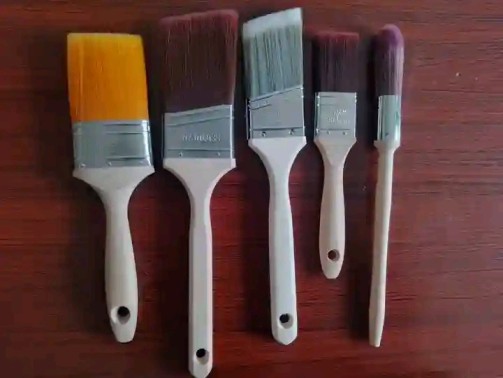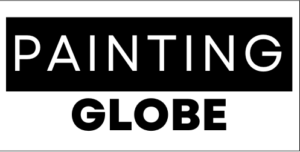Two of the most popular methods for painting surfaces, whether walls, furniture, or exterior facades, are spray painting and brush painting.
Both have unique benefits and drawbacks; choosing between them can significantly impact the final result of your painting job.
While professional painters and DIY enthusiasts often have personal preferences, understanding the differences between these two methods can help you decide which is best suited for your project.
In this comprehensive guide, we’ll explore the pros and cons of spray and brush painting, including their ideal use cases, costs, preparation requirements, and the quality of finish each method can provide.
By the end of this article, you’ll have a clearer understanding of which technique to choose for your next painting project.
An Overview of Spray Painting
Spray painting is the application of paint using a spray gun or aerosol can. This method atomizes the paint into fine particles, that are sprayed onto the surface.
Spray painting offers a quick and efficient way to cover large areas with a smooth, even finish.
Types of Spray Painting Methods
There are a few different types of spray paint, each with its characteristics.
1. Aerosol Spray Cans
These are handheld spray cans that contain pre-mixed paint. They are easy to use for small projects but are not practical for larger surfaces.
2. Airless Sprayers
Airless sprayers use high pressure to atomize the paint without the need for air. They are ideal for larger projects and provide a consistent finish.
3. HVLP (High Volume Low Pressure) Sprayers
HVLP sprayers use air to atomize the paint at a lower pressure, which results in less overspray and a more controlled application.
These are commonly used for more detailed work like furniture or cabinetry.
An Overview of Brush Painting

Brush painting is the traditional method of applying paint using a brush, and it’s one of the most common techniques for both DIY and professional projects.
Using a brush allows for greater control, particularly in areas where detail or precision is required.
For instance, synthetic brushes work well with latex paints, while natural bristle brushes are preferred for oil-based paints.
Pros and Cons of Spray Painting
Spray painting is known for its speed and ability to cover large surfaces efficiently, but it’s not always the best choice for every project.
Here’s a detailed breakdown of the advantages and disadvantages of spray painting.
Advantages of Spray Painting
1. Speed and Efficiency
Spray painting is considerably faster than brush painting, especially when covering large areas.
The ability to cover wide surfaces in minutes makes it ideal for extensive jobs, such as painting the exterior of a house, fences, or even cars.
2. Even Finish
Spray painting results in a smooth, even finish without brush strokes or roller marks.
This is especially important for achieving a professional look on surfaces like walls, ceilings, or automotive panels where texture can detract from the overall aesthetic.
3. Great for Hard-to-Reach Areas
Spray painting can easily reach areas that are difficult to paint with a brush, such as intricate corners, crevices, or textured surfaces.
It can also handle irregular shapes or complex designs, making it ideal for furniture and items with ornate details.
4. Versatility
Spray painting can be used for various materials such as wood, metal, plastic, and more.
With the right nozzle and paint type, you can achieve a durable finish on different surfaces, making it a versatile option for multiple projects.
5. Minimal Physical Effort
Spray painting requires less physical effort than brush painting.
There’s no need for repetitive brush strokes or pressure, which can be tiring over long periods.
This makes spray painting more ergonomic, particularly for large-scale projects.
Disadvantages of Spray Painting
1. Overspray and Wastage
One of the biggest downsides of spray painting is overspray, which can lead to wasted paint and mess.
Overspray occurs when paint particles drift away from the target surface, potentially landing on nearby objects, furniture, or the ground.
This not only wastes paint but also requires careful preparation to protect the surrounding area.
2. Requires More Preparation
Due to the risk of overspray, spray painting requires extensive preparation.
You’ll need to mask or cover anything you don’t want to be painted, such as windows, doors, and furniture.
This adds time to the project and can be cumbersome for smaller jobs.
3. Difficult to Control in Windy Conditions
If you’re painting outdoors, spray painting can be problematic in windy conditions.
The wind can carry paint particles away from the surface, leading to uneven coverage and additional cleanup.
4. Thicker Paints May Require Thinning
Some paints are too thick to be used in a sprayer and may need to be thinned before application.
Thinning paint can change the coverage and finish, which might affect the outcome of the project.
5. More Equipment Required
Spray painting typically requires more equipment than brush painting, including the sprayer, hoses, and possibly an air compressor.
This makes it a more expensive option upfront, especially if you don’t already own the necessary tools.
Pros and Cons of Brush Painting
Brush painting remains a popular method, particularly for smaller projects or areas that require a high level of detail.
While it’s slower than spray painting, it offers several advantages making it the preferred choice for many applications.
Advantages of Brush Painting
1. Precision and Control
A paintbrush offers far greater precision and control than a sprayer.
You can easily paint intricate details, edges, and corners without worrying about overspray.
This makes brush painting ideal for trim work, doors, furniture, and small touch-up jobs.
2. Minimal Preparation Required
Brush painting requires less preparation than spray painting.
There’s no need to cover everything in the room or protect nearby surfaces from overspray.
This makes it a more convenient option for quick jobs where you don’t want to spend extra time masking and preparing.
3. Better for Small Areas
When working on small areas, such as a single wall or piece of furniture, brush painting is often the better choice.
It allows for greater attention to detail and doesn’t require setting up extra equipment like a sprayer.
4. Thicker Coats of Paint
Brushes can apply thicker coats of paint, which can be useful for surfaces that need extra durability or coverage.
This also makes it easier to cover imperfections on the surface.
5. Lower Cost
Brush painting generally requires less equipment and is more affordable, especially for small projects.
All you need is the appropriate brush and paint, making it a budget-friendly option for homeowners and DIYers alike.
Disadvantages of Brush Painting
1. Slower Application
The biggest disadvantage of brush painting is the slower speed of application.
Painting large surfaces with a brush can be time-consuming and labor-intensive, especially when multiple coats are required.
2. Brush Marks
Unless you’re very skilled, brush painting can leave visible brush marks or streaks, especially with certain types of paint.
Achieving a smooth, professional finish requires careful technique and the right brush, making it a bit more challenging for beginners.
3. Tiring for Large Projects
Painting large surfaces with a brush can be physically demanding, especially if the project requires extended periods of work.
This is particularly true for ceilings or high walls where you’ll need to maintain upward pressure with the brush.
4. Inconsistent Coverage
With brush painting, it can be more challenging to achieve perfectly even coverage, especially on textured surfaces.
Unlike spray painting, which atomizes the paint for uniform application, brush strokes can sometimes leave thin spots or uneven coats.
5. Requires More Skill
Achieving a professional finish with a brush can require a higher level of skill.
Brush technique, paint thickness, and brush quality all contribute to the final appearance, so less experienced painters may struggle to achieve a smooth, flawless finish.
When to Choose Spray Painting
Spray painting is the better choice for certain types of projects, particularly those that require speed, efficiency, and a smooth finish.
Consider using spray paint in the following situations.
1. Large surfaces
If you’re painting a wall, ceiling, or large exterior surface, spray painting will save you time and effort.
2. Smooth finishes
For projects where you need a flawless, even finish, such as on cars, furniture, or cabinetry, spray painting is ideal.
3. Hard-to-reach areas
When painting surfaces with intricate designs, corners, or hard-to-reach spots, a sprayer can get into places a brush cannot.
4. When working outdoors
If you’re painting the exterior of a house or a large outdoor structure, spray paint can make the job go much faster.
When to Choose Brush Painting
Brush painting is often the best option for projects that require detail and precision, or when working on smaller surfaces.
Consider using brush painting in the following situations.
1. Detail work
For trim, molding, or furniture with intricate details, a brush offers the control and precision needed for a clean, professional result.
2. Small areas
If you’re painting a single room, wall, or piece of furniture, brush painting is more efficient and doesn’t require as much preparation or equipment.
3. Touch-ups
For minor repairs or touch-ups, using a brush allows for greater accuracy and prevents overspray from affecting surrounding areas.
4. Textured surfaces
When working on rough or textured surfaces, using a brush can help you apply thicker coats of paint to ensure complete coverage.
Conclusion: Which is Best?
Ultimately, the choice between spray painting and brush painting comes down to the specifics of your project.
If you’re working on a large area and need to finish quickly with a smooth, even coat, spray painting is your best bet.
However, if you’re painting a small or detailed area where precision is key, brush painting may be the better option.
For many projects, a combination of both techniques can be used to achieve the best results.
Spray painting large surfaces and brush painting the edges, trim, or detailed sections can give you the benefits of both methods while minimizing the drawbacks.
In summary, understanding the strengths and limitations of both spray and brush painting will help you make an informed decision for your next painting project, ensuring the best possible results with minimal hassle.






























